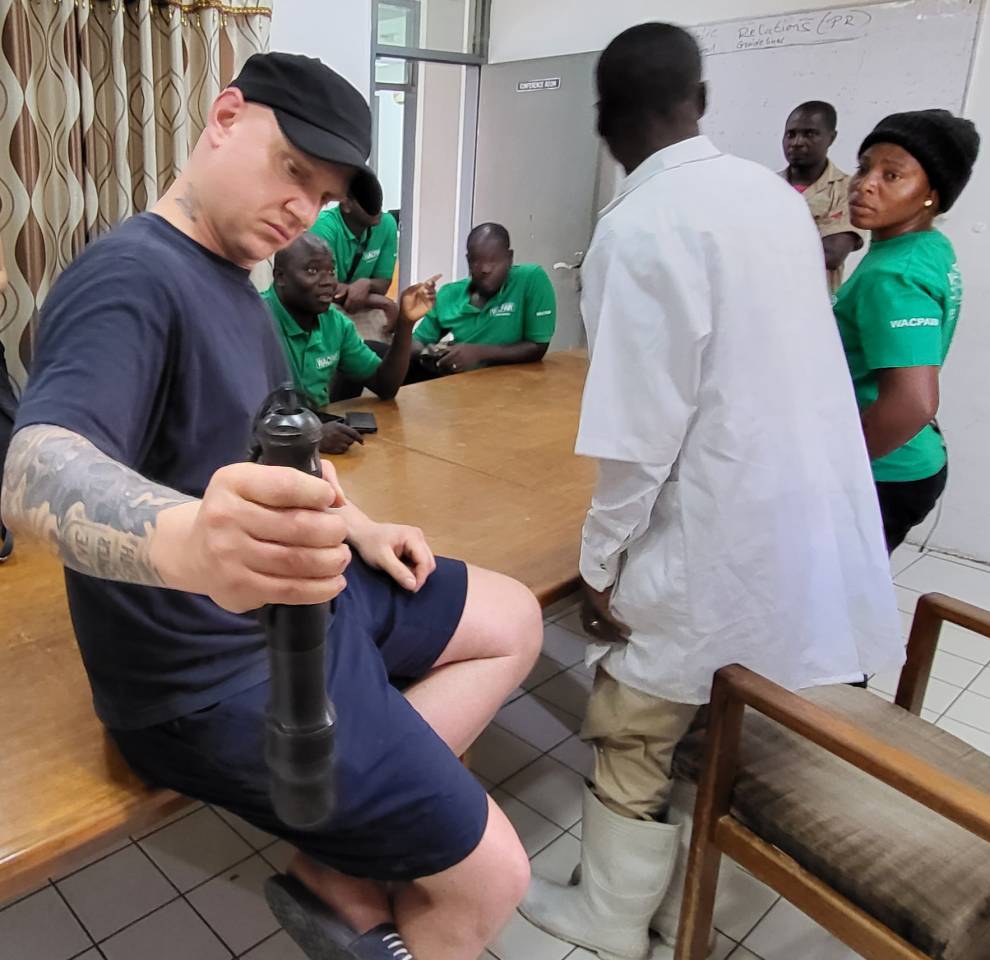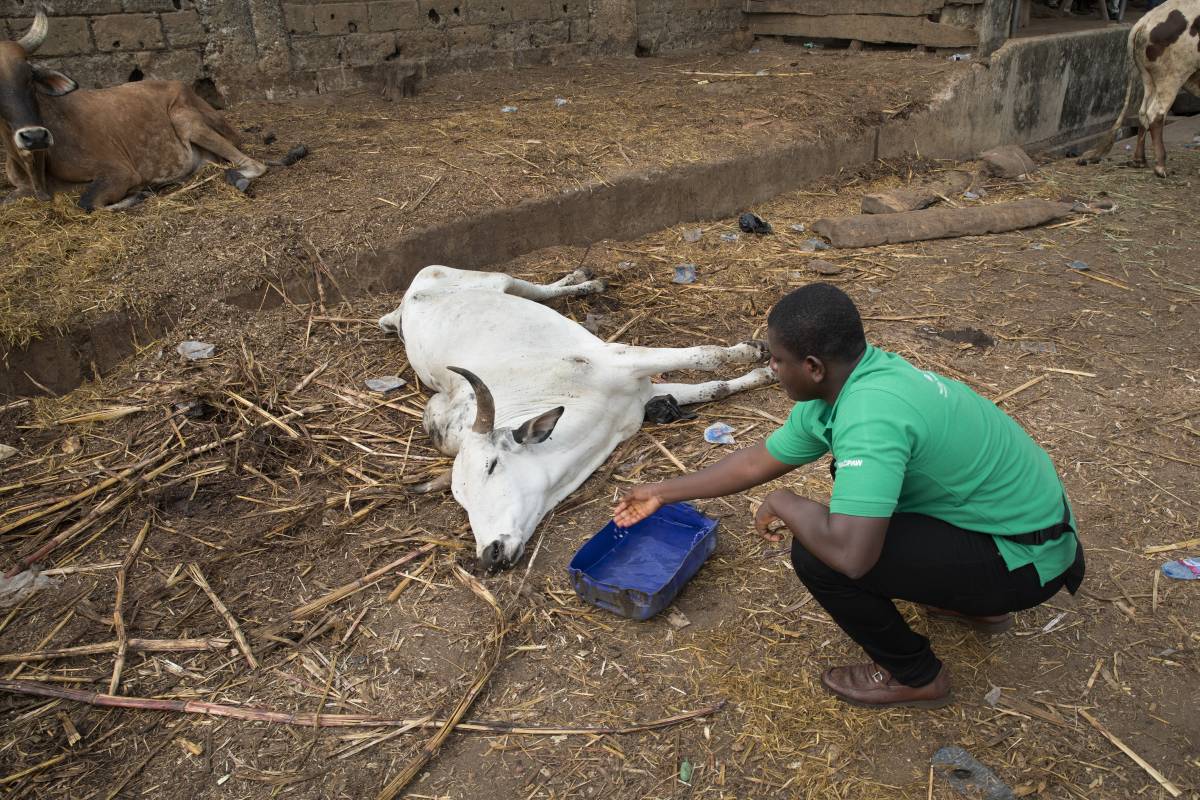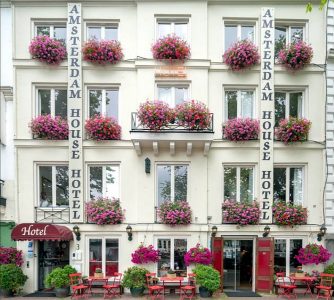Today the EonA and WACPAW team in Ghana went to Kumasi Abattoir, one of the largest slaughterhouses in Ghana. Here, 300 cattle, 50 pigs and dozens of goats are slaughtered every day. It is a slaughterhouse that was built with money from the Canadian International Develoment Agency 25 years ago and back then was state of the art. However, many things no longer work and everything has fallen into disrepair, including the original electric pig-stunning system. For this reason, when we first arrived in 2018, pigs were being clubbed to death with a heavy metal bar. The lairage gates were all rusted-shut and pigswere being thrown over the gates (!). Sadly they do not have money to renovate. We have been here three times already tofix the pig raceway, create a restraint box and donate captive bolt pistols and cartridges. We also gave 2 training courses to their staff on how to use captive bolt stunners safely to render the pigs unconscious quickly, rather than beating them to death. Please see the video about these improvements.
During our inspection today we noticed that the pig raceway is sadly now used as extra “storage” space to house pigs because their lairage is too small and dilapidated and more and more pigs are coming. Together with external parties, we will see if we can come up with a long-term solution for this abattoir so that we can further decrease some of the serious suffering. One thing is certain, abattoirs in Ghana don’t benefit from EU or Canadian one-time subsidy/donations without follow up assistance, training and supervision ! They need companies to invest locally in Ghana, to provide local training and assistance in the long term and to also manufacture stunners like captive bolt pistols here in the future here so that they are more affordable than having to import them from Europe.
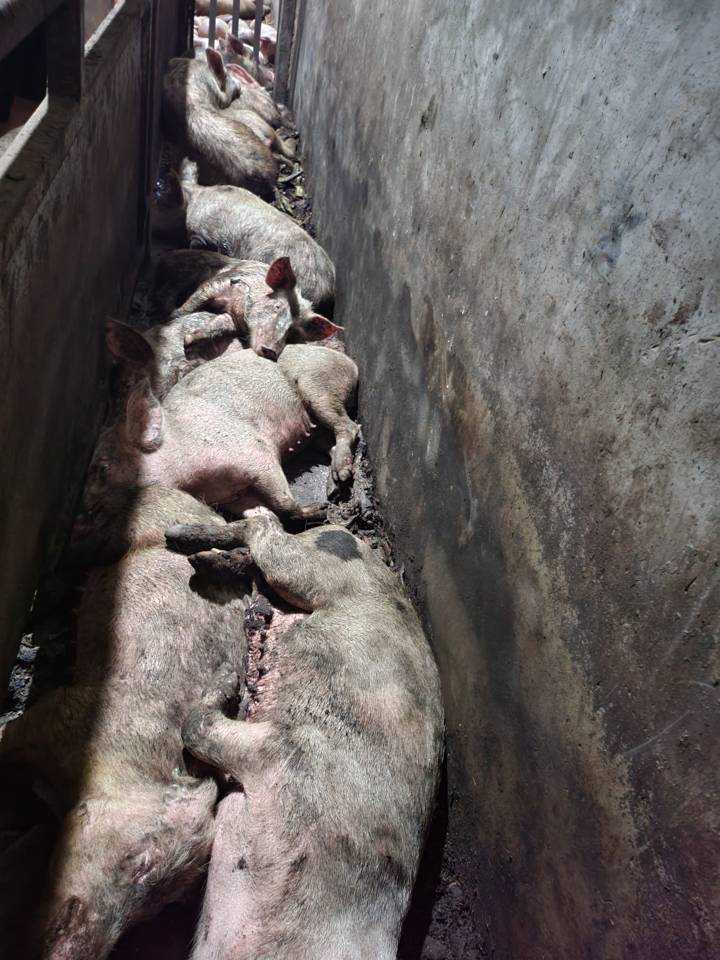
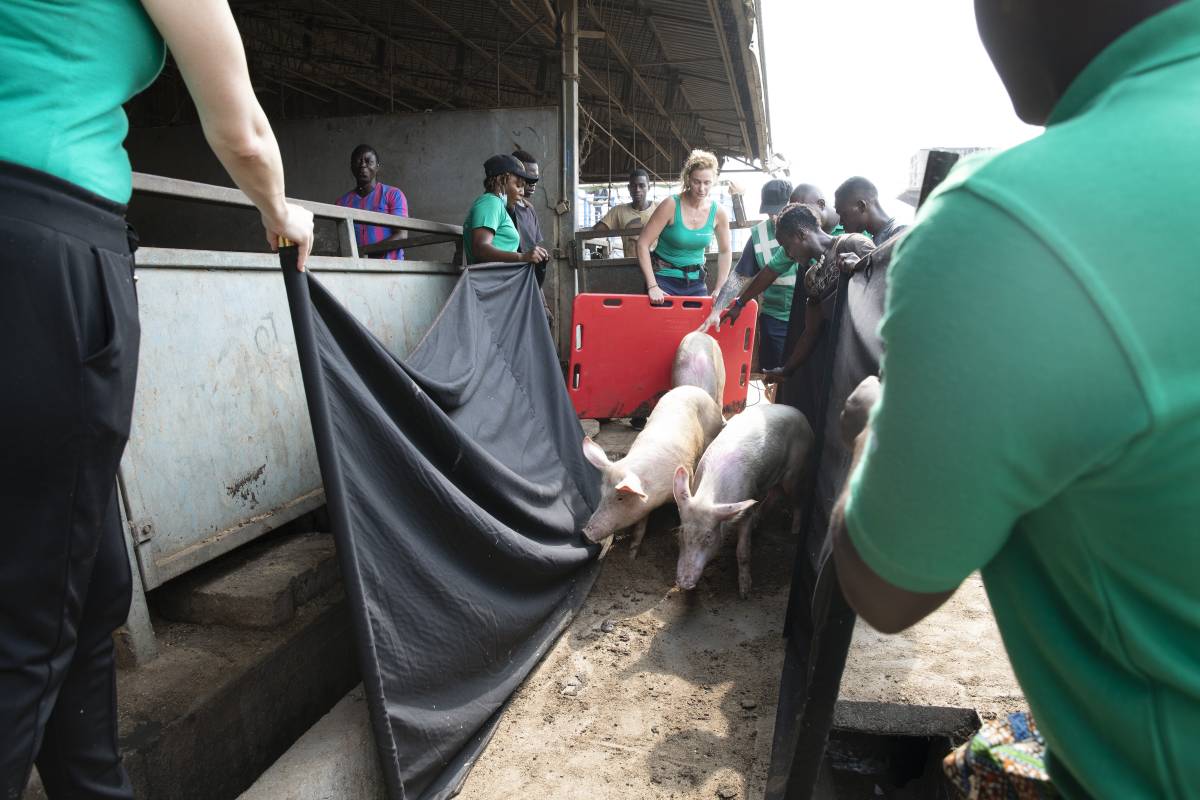
We have to make people more and more aware, vai education, that animals can feel pain, stress or fear just like us. WACPAW and EonA will not give up. In the new year we will help construct a proper lairage and an unloading ramp for the pigs. Today we fixed one of their damaged captive bolt pistols and gave them a new one so at least the pigs can continue tobe stunned before slaughtered. The staff are very good at stunning pigs properly now and are relieved that they no longer have to use clubs. Today we also used our black portable textile raceway to move pigs from the lairage into the stunning area in a safe way, whereby pigs could remain on all 4 of their legs to walk themselves, instead of being thrown and dragged.
Cattle from far away (often Burkin Faso which is far and the roads are full of bumps and the trucks have little or no suspension) arrive at this plant so dehydrated, exhausted and also often injured that many cannot walk off the truck and are dragged out and left for dead or dragged into the kill floor. There is still too much hesitation among the Muslims at this abattoir to get stunners used on cattle and goats. These animals sadly continue to be cut and bled out all while fully alert and sentient. Sadly the knives used are also quite blunt.
We will stay in touch with the managers and, as long as this plant is open, try to get more and more improvements into place. Ghana received subsidies to build slaughterhouses in the 1990’s as a way of centralizing and supervising meat production and safety, to put an end to bush meat hunting and backyard slaughter, which apparently was also cruel and posed sanitation and health issues, as there were no vets to check that the meat was safe for consumption. It is evident to our teams that the original diet of Ghanaians, mainly plant-based with some fish or snails for taste and protein, is wiser than branching out into large scale production, transport and slaughter of cattle, goat and pig meat…
